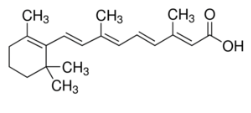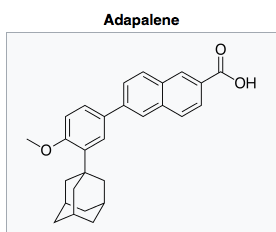Retinols vs. Retinoids? What is the difference. What is the best? All Retinols (OTC) and Retinoids (RX) are not the same. Firstly, the molecule must be below 500 daltons to penetrate the skin. Additionally, every retinol / retinoid product has more than just these ingredients. Many of them have 20-30 more ingredients, yet when an irritation is experienced, the retinol/retinoid is blamed. Many times, the irritation is caused by another ingredient in the formula, especially if the product contains parabens or dimethicone.
Retinoid Acid – 300.44 Molecular Mass (aka Renova, Tretinoin, Retin-A, Atralin)
Most people think this is the gold standard. It is for acne not for collagen production. Key word acid- cannot be micro-encapsulated like the alcohol version of the molecule ( All Trans Retinol). Therefore, it creates way more irritation. Its less stable once applied, so you lose some of the efficacy. Its larger and harder to penetrate the cell. It oxidizes before it gets to the cell.

Adapalene -412.52 Molecular Mass (More surface targeted make this molecule good for acne.)

Retinyl Acetate – 328.49 Molecular Mass

Retinyl Palmitate – 524.86 Molecular Mass – which is the most widely used Retinol and too large to penetrate ( I mean look at the size of that molecule compared to ours!) All Retinols/ Retinoids are not equal and do not get the same results. That would be the difference in trying to get a needle into a cell ( All Trans Retinol as oppose to the tip of pencil ( Retinyl Acetate)

All – Trans Retinol – 286.46 Molecular Mass
All Trans Retinol is far superior for collagen production, less irritating, which is why it is what we use. A Method and IT formulas are also paraben-free making them even more premium and effective. Most people don’t know this information, and have never seen it laid out like this. We hope you find this helpful in understanding Retinols vs. Retinoids.








 Enter your information to receive a 2022 Catalog
Enter your information to receive a 2022 Catalog